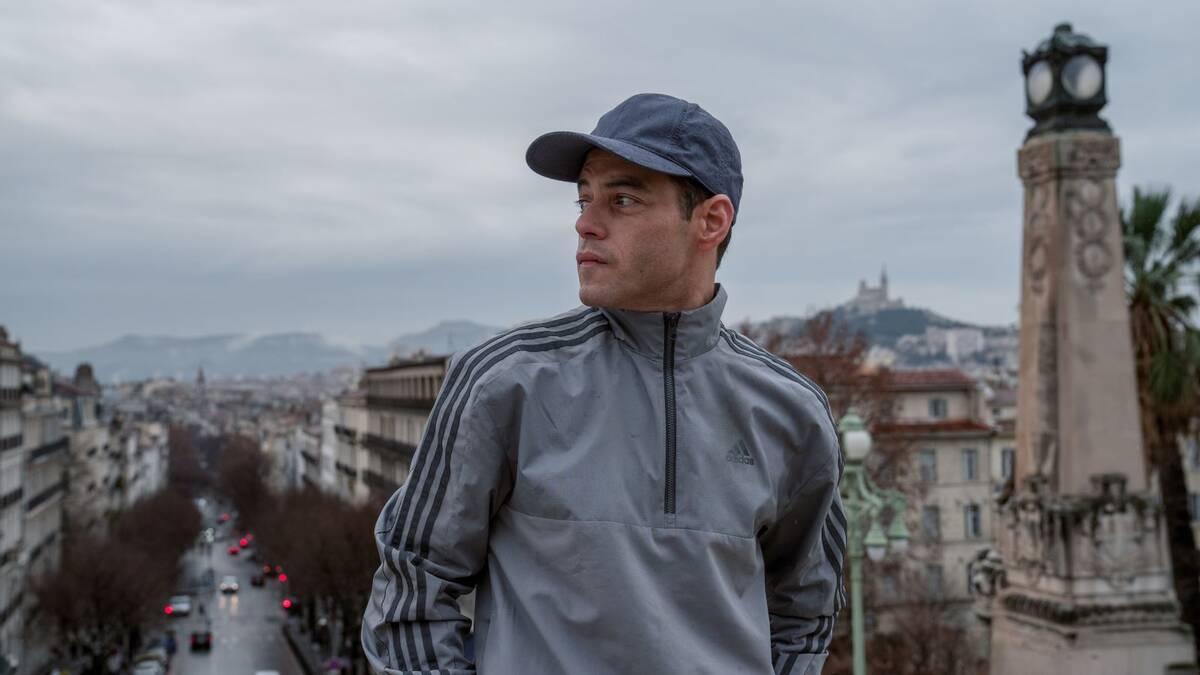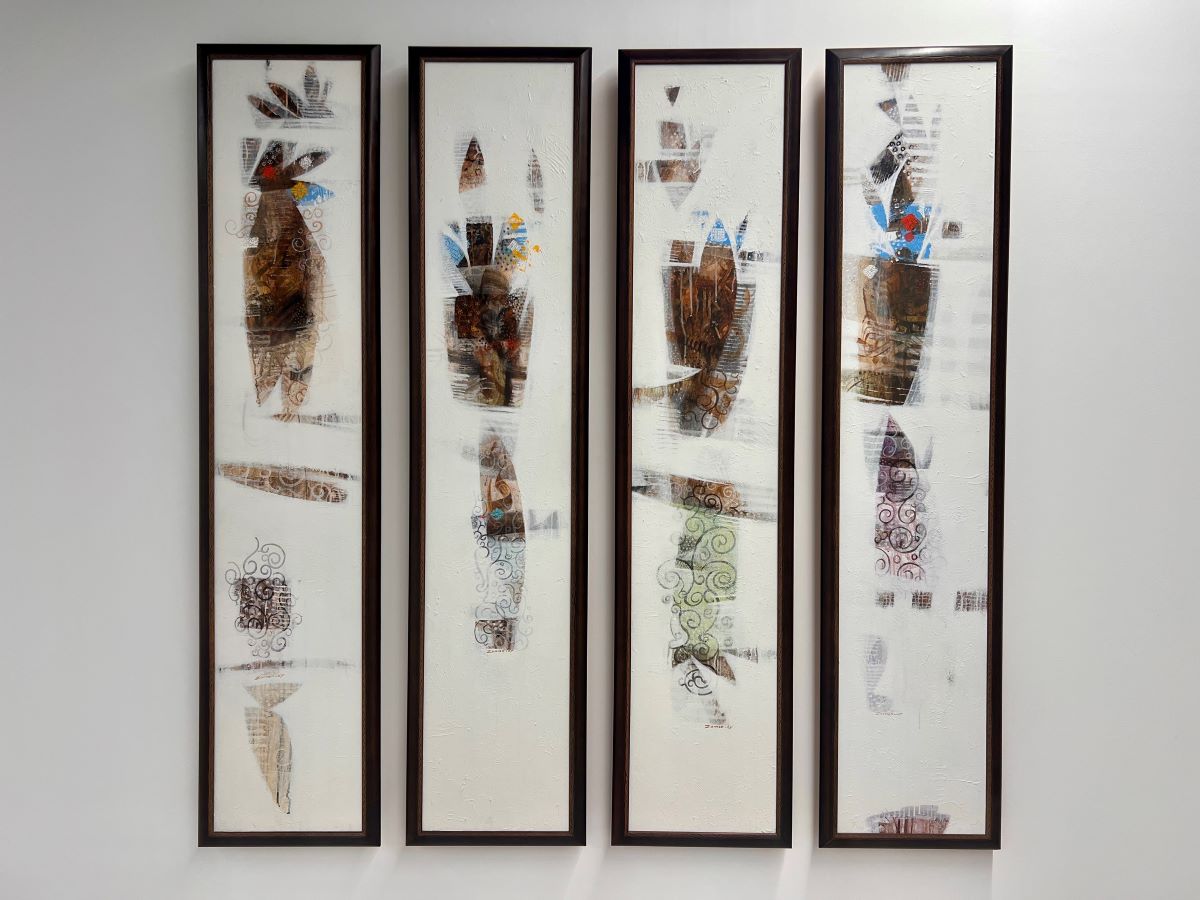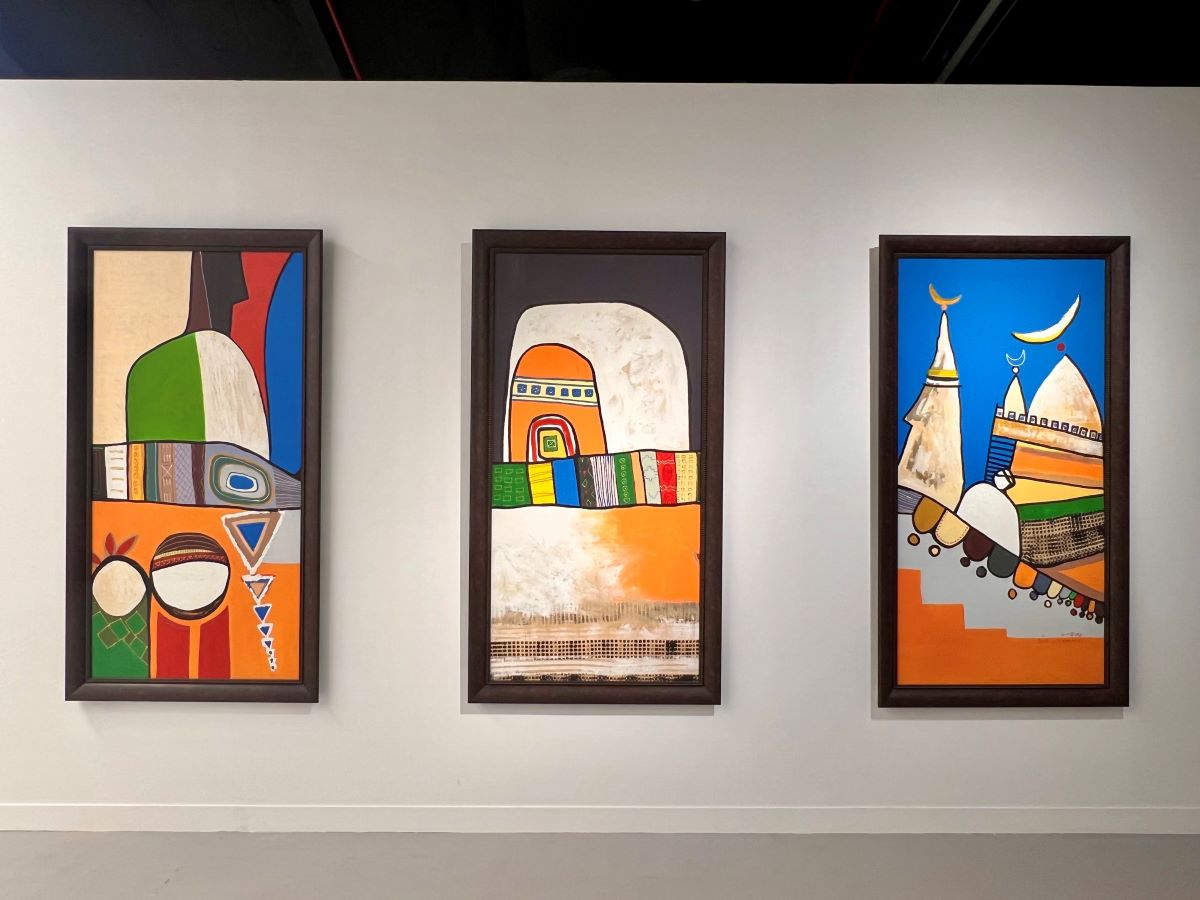DUBAI: They look like dozens of sandcastles, some bigger than the others, the remains of hours of imaginative play, except for the fact that the 364 concentric sand mound circles are stationed within the breathtaking rock formations of AlUla, the ancient region in Saudi Arabia that has been drawing people and civilizations for over 200,000 years.
The circle of sand mounds is by US artist Jim Denevan. Titled “Angle of Repose,” it is one of the first and largest works visitors will see when they attend Desert X AlUla’s second edition, which opened on Feb. 11 and runs until March 30.
The work was made with the help of local volunteers from AlUla. As one approaches and enters the work, the sand mounds go from larger to smaller in size. The experience is breathtaking and surreal, causing one to ask if they are really on planet Earth or perhaps rather in some faraway alternate reality. This was exactly Denevan’s aim: To mold, like his many sandcastles, the visitor’s experience in the desert.

Ayman Zedani, ‘The Valley of the Desert Keepers,’ Desert X AlUla, 2022. (Supplied)
Denevan’s work is one of 15 now on show at Desert X AlUla, the site-specific contemporary exhibition of monumental art in the desert, launched in AlUla in early 2020. The event, which first took place in Coachella Valley in California in 2017, is about creating art in dialogue with the land that also prompts cross-cultural dialogue and the examination of pertinent topical issues.
This year’s event, which is free and open to all, was staged under the curatorial vision of Reema Fadda, Raneem Farsi, and Founding Desert X artistic director Neville Wakefield.
It took place in a larger location, the Al-Mutadil valley, under the theme “Sarab,” which means mirage in Arabic. The artists, who come from around the world, including the US, Saudi Arabia, the UAE and Ghana, created work without any guidelines from the organizers but which was cemented in ideas of literature, nature, history and culture intrinsic to the desert surroundings in which they were placed.
“The desert concepts of mirage and oasis have long been tied to ideas of survival, perseverance, desire and wealth,” said Fadda in a statement. “The oasis pertains to ideas of finding prosperity or heaven, while the mirage is a universal symbol of the mysteries of imagination and reality. They also connote the incomprehensible beauty and abundance of nature in its most bereft state—the desert – and humans’ obsessive desire to capture and control it.”

Claudia Comte, ‘Dark Suns, Bright Waves,’ Desert X AlUla, 2022. (Supplied)
“I think the desert is interesting to people because it is a heterotopic space, not because it can be subsumed under a single theme,” Wakefield told Arab News. “My version of Desert X whether it is here, or California, is that it is not thematic. It must be curated by the place.”
Through their work artists tackled questions of human progress, migration, ancient history, and importantly, climate change.
“There are currents that run through the works and the environmental one is at the fore,” said Wakefield.

Dana Awartani, ‘Where the Dwellers Lay,’ Desert X AlUla, 2022. (Supplied)
An example is Canadian artist Stephanie Deumer’s “Under the Same Sun,” in which she created an underground greenhouse that functions at the intersection of nature and technology.
Visitors can walk from the desert down into Deumer’s greenhouse, as if they were going into an underground bunker but with a solar roof. The solar power projects a live feed from the outside onto plants encased in a glass vessel inside and creates this artificial light and is a mimicking of what you see outside to nurture and grow the plants. “She’s created a completely self-sustaining system,” said Wakefield.
The two coral-like sculptural forms of British artist Shezad Dawood, titled “Coral Alchemy” I and II, similarly ponder the environment’s ancient and modern uses, particularly AlUla’s relationship once to water—hundreds of years ago the rock formations that one sees were all underwater.

Jim Denevan, ‘Angle of Repose,’ Desert X AlUla, 2022. (Supplied)
Dawood’s two sculptures—one unmissable on a large sandy road and the other positioned high up within the rock formation as if it were camouflaged—explore the geobiological relationship between the desert floor and nearby Red Sea. The surfaces of the works are temperature-sensitive and reflect the effects of the sun as their color changes in certain parts—a way to reflect the result of climate change and mankind’s struggle to find sustainable solutions.
Stand-out pieces included Ghanaian artist Serge Attakwei Clottey’s “Gold Falls,” a vibrant yellow tapestry-like work made from square parts of yellow water jerry cans found throughout Africa that the artist has long used to discuss issues related to water scarcity and migration in Africa.
The work can be sighted across from Denevan’s multitude of sand mounds. Clottey, who participated in the Coachella event in 2021, is the first and only African artist in this year’s AlUla edition. For most Africans, explains Clottey, the desert conjures up fear because it is associated with migration, loss, and death.

Serge Attukwei Clottey, ‘Gold Falls,’ Desert X AlUla, 2022. (Supplied)
“I am an artist who creates with my heart not my head and I am interested in the significance of certain objects to Africans,” Clottey told Arab News. “They use these yellow jerry cans to transport cooking oil from the west. After the oil is used, we use them to store water which has become problematic for our health. As an artist, I am interested in the origin of the containers and how they become symbolic in our life.”
However, the title of this work, “Gold Falls,” is supposed to conjure up hope. Clottey wants to show how a new relationship, one less threatening, can be made with the desert through art.
In other parts, less assuming, smaller-sized works, by Shaikha Al Mazrou and Zeinab Alhashemi, both from the UAE, collaborated with the surroundings, almost camouflaged by their similar colors and shapes to the surrounding rock formations.
In Alhashemi’s work, titled “Camouflage 2.0,” she used discarded camel skins on abstract geometric bases—their forms resembling those found in the AlUla landscape. Al Mazrou’s “Measuring the Physicality of Void” presents several steel-made inflated structures wedged into the void of the rocks that one must search to locate.

Shadia Alem, ‘I have seen thousands of stars and one fell in Alula,’ Desert X AlUla, 2022. (Supplied)
Participating Saudi artists—Shadia Alem, Abdullah Al-Othman, Sultan bin Fahad, Ayman Zedani and Dana Awartani—thoroughly explored the natural AlUla landscape and its ancient histories through their art.
Alem’s origami shaped glistening sculpture “I Have Seen Thousands of Stars and One Fell in AlUla” looks like a gigantic jewel fallen from the sky, embellishing the desert landscape.
Bin Fahad’s mud structure, made with help from the local community, is in the shape of a desert kite that one walks through until they get to a circular open-air room with a large glass urn that points to the sky. The form, known as the desert kite, can be found throughout the Arabian desert and archaeologists are still not sure whether the ancient structures are tombs or traps where Bedouins would capture animals.
Zedani’s performative piece can be reached via a climb up a rocky mount by following yellow and green ropes. Upon reaching the rocky cavern on top, visitors hear a recitation of Arabic words for desert plants with the background sounds of the surrounding desert landscape. The experience is haunting and meditative, with the sound of the visitor’s own footsteps on the rocks adding to the congregation of diverse sounds that organically seems to rhyme in unison.

Shezad Dawood, ‘Coral Alchemy I (Dipsastrea Speciosa),’ Desert X AlUla, 2022. (Supplied)
Awartani’s “Where the Dweller’s Lay”—a work that prompted many photo-snapping opportunities—is made from local sandstone. Her concave geometric sculpture was inspired by the vernacular architecture found in ancient AlUla—particularly in the step patterns found in Nabatean tombs. The gigantic sculpture invites viewers to take a seat inside, pause, and reflect on the history and beauty of the surroundings.
The journey to view the works in Desert X AlUla adds to the experience of viewing the art and the state of being in nature. One feels the magnitude of the desert landscape, the sandy wind and air, reminders of the strength and power needed to dwell or traverse such habitats for lengthy periods of time.
“Geography of Hope” by Al-Othman reflects on the experience of seeing a mirage in the desert after a long and arduous voyage. A long strip of shiny steel in the shape of a body of water reflects the surrounding landscape.
“It’s about how when looking for water in the desert you find a mirage,” the artist told Arab News. The work reflects different colors depending on the time of day one views it and the angle of the sun. “The mirage gives you hope on your journey.”

























